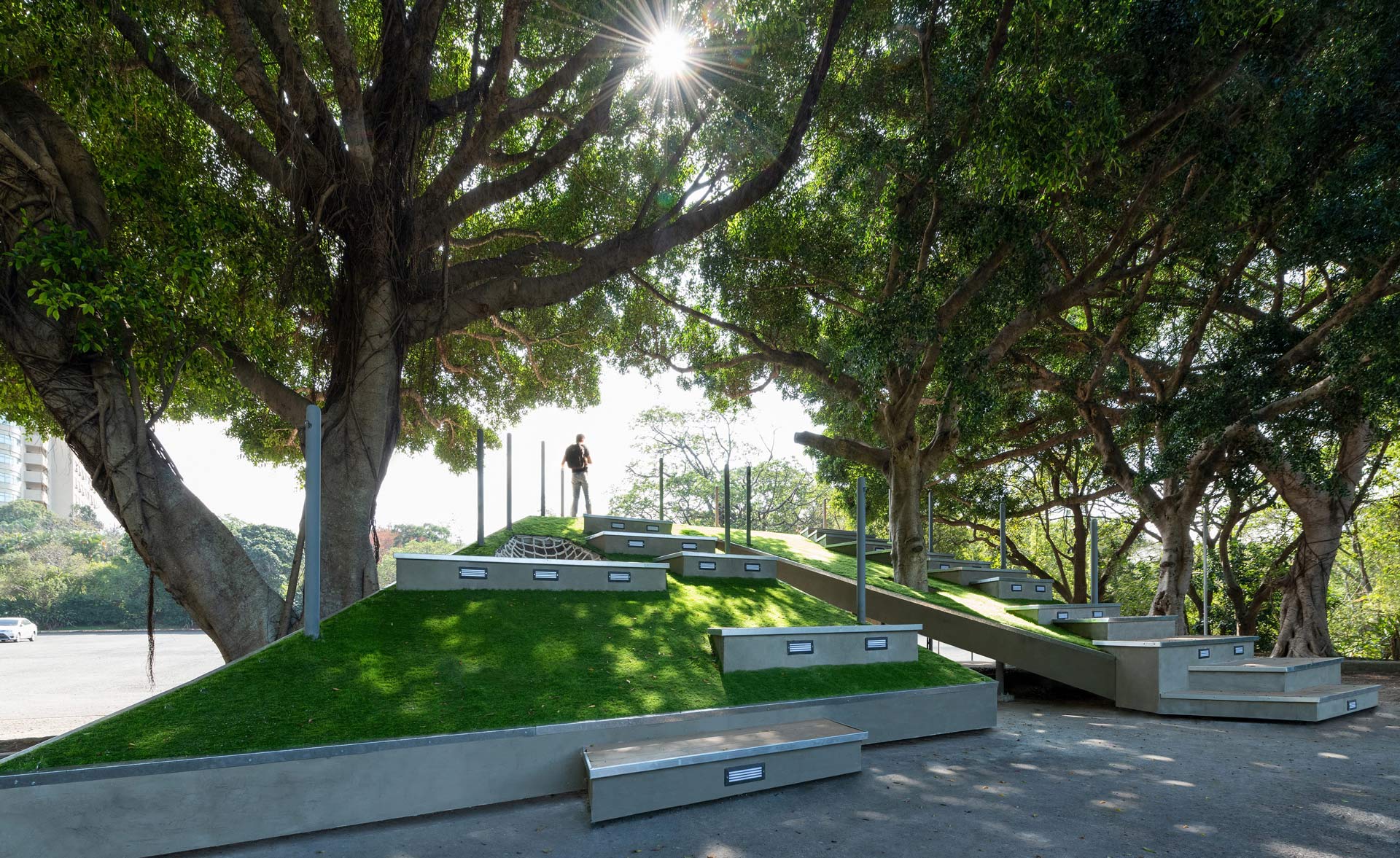Completion Year: 2020
Status: Hsinchu
Completion Year: 2020
Status: Hsinchu
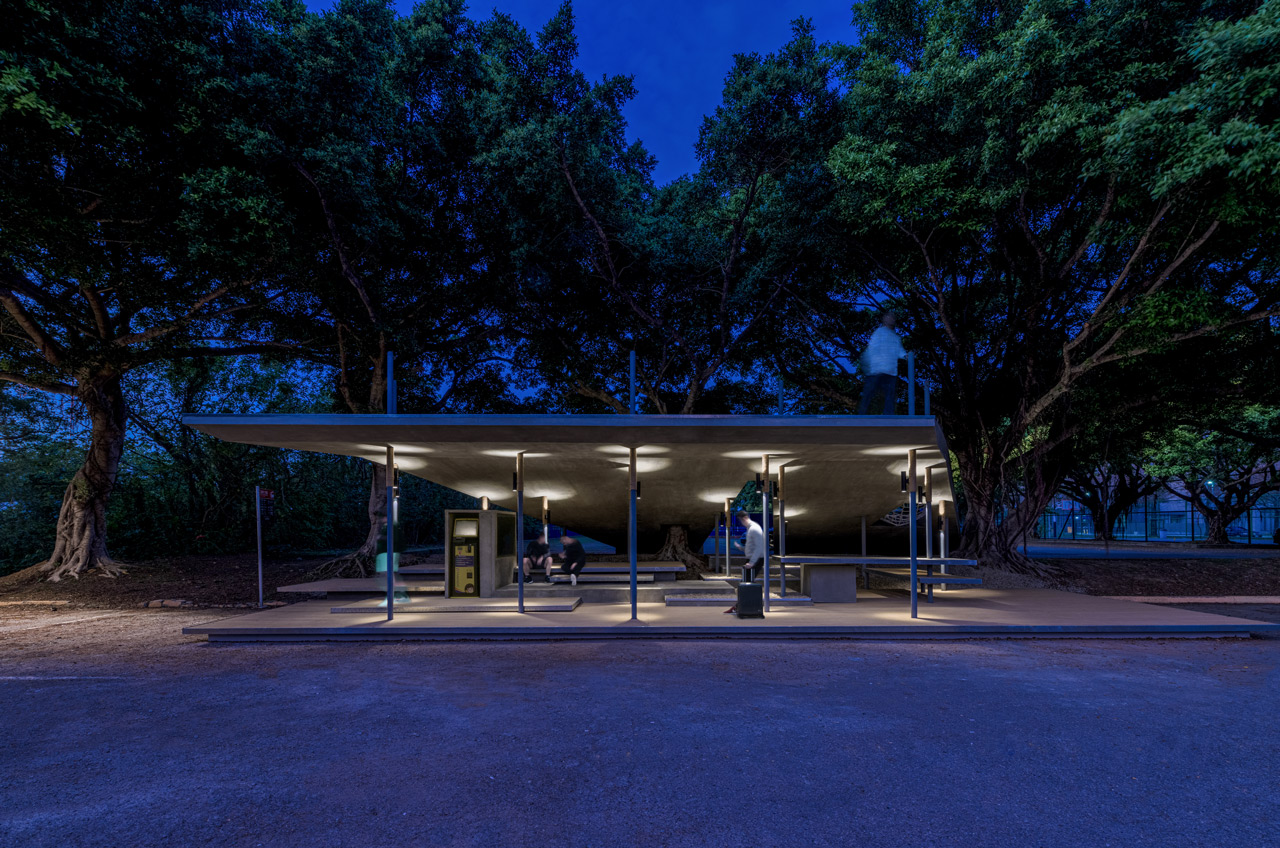
候車之亭-驛站功能感知的雙面性
Bus-Stop – Perception Duality of a Transportation Stop
位於風城新竹的交通大學,是匯聚了眾多青年學子的綜合高教學府,來自台灣各地的大學生與研究生,多數以大型公車由外地進入校園,對每一位交大遊子而言,候車亭具有特別的意義,是連結求學之路的重要驛站,一道生命記憶中的獨特風景。近年來,校園內的候車亭陸續做了新的設計,在校方強化美感校園與減法美學的思維下,不斷地美化校園風貌。本次候車亭基地鄰近交大南門,位處校園的邊陲角落,卻也是連結內外的重要節點,對使用者而言,這座候車亭承載的,不只有單純的候車功能,更蘊含交大人的情感與對未來生活方式與生活美學的期待。
The National Chiao Tung University, situated in the windy city of Hsinchu, is a premium university that many top students congregate. Most of students commute to the university via buses, the bus station is meaningful and memorable for these commuting students during their learning journey. In recent years, the on-campus bus-stops have undergone renovations while the university carries out its campus renovation initiatives with reductive aesthetics discourse. The site of the bus-stop, situated near the south gate of the campus, is an important transportation node that connects the in and out of the campus. Bus-Stop not only provides its function but also creates meaningful memories, future lifestyle, and living aesthetics for students and staff.
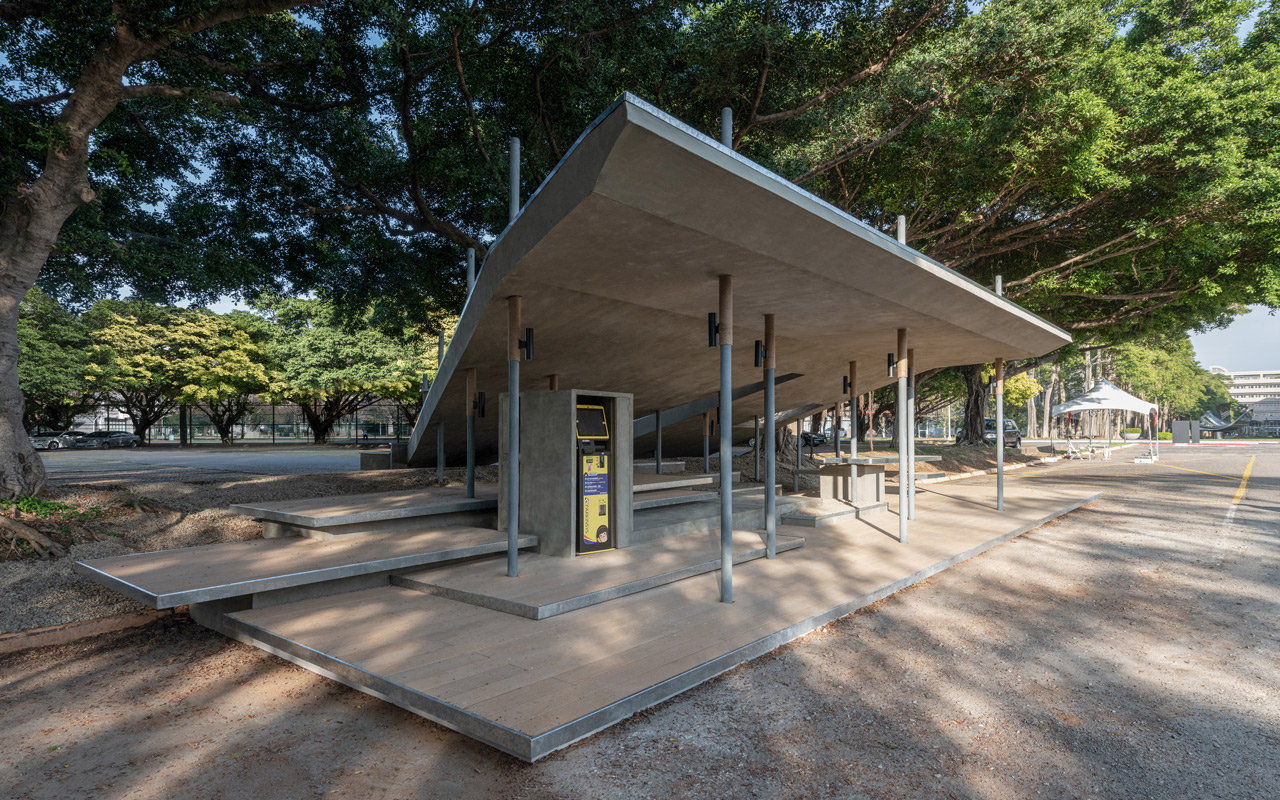
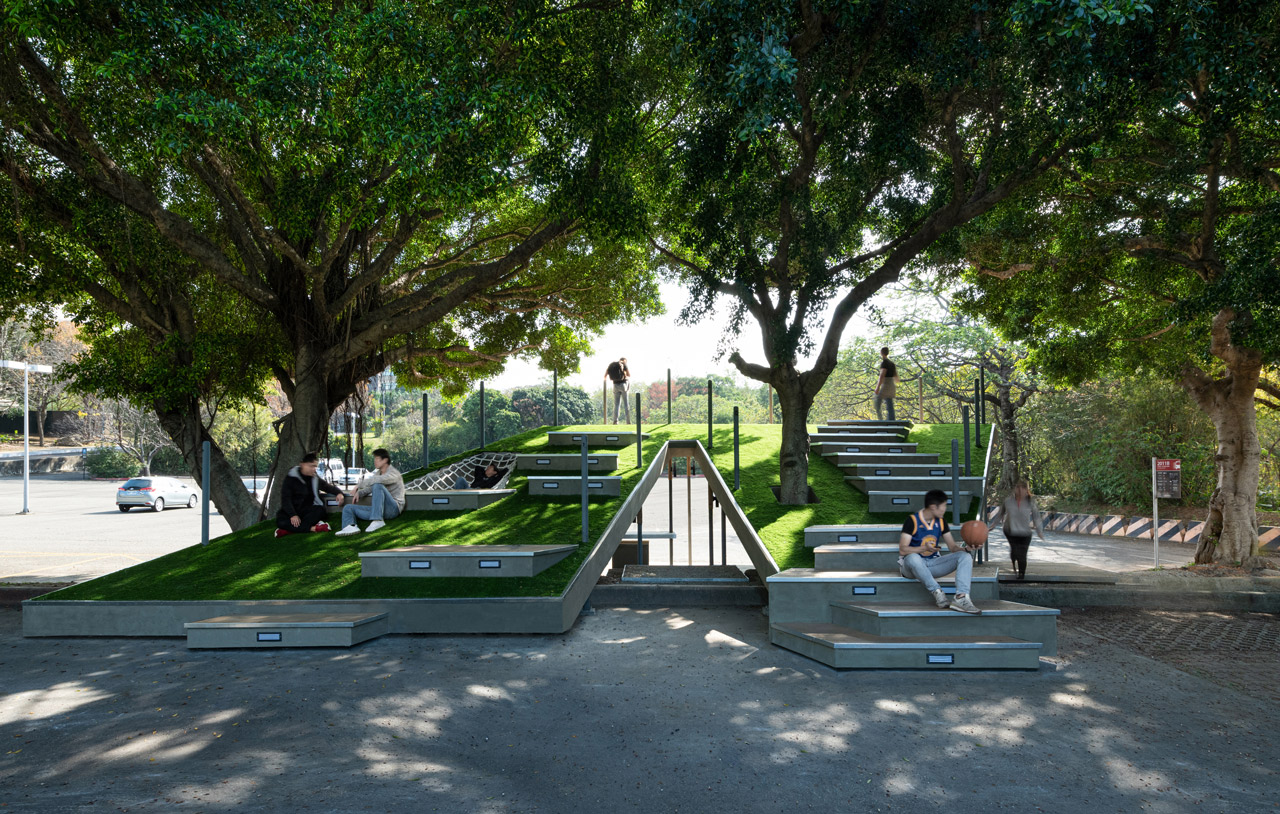
地景美學-平台設計軟化的高程起落
Aesthetics by Landscape – Height Difference Softened by Split-Level Design
候車亭基地位處南大門停車場內,緊鄰籃球場、網球場匯集的區域,空曠的停車場與運動設施為後山綠地所環繞,所處位置因地形關係將停車場一分為二,並產生了1.2公尺的高程差,故在規劃之初,我們便決定透過設計手法,軟化高低落差造成的視覺與活動障礙,並延續校園與環境共生的思考,以「地景性」思維作為設計主軸,加之以「減法設計」的手段,以順應地形的方式讓建築形式自然成形,藉由設計串聯起不同的高程,也有效削弱了北風對於候車人的吹襲。由於基地周遭有諸多運動場地,亦不定時舉辦活動,我們以「平台」的概念串接起不同的使用機能,地景式的半戶外開放式設計,讓候車亭承載的不再只是候車的功能,而增添了和周圍活動對話的機會,創造了提供不同功能、族群、時段使用的多功能活動方式。
As the site of the bus-stop is located within the car park at the south gate next to the basketball and tennis courts surrounded by the green area. The car park is divided into two sections with 1.2 meters in height difference; therefore, the design team addresses the height difference by softening the visual and circulation obstacles by forming a symbiotic relationship between the campus and environment in a landscape-design theme complemented by a Reductive Design to allow the landform to shape the building form while the design also minimizes the effect of the northerly breeze on those waiting at the bus stop. As the site surrounded by many sports facilities host many sporting events, the “Platform” design concept seeks to enhance the dialogue possibilities of the bus stop with its surrounding. The semi-outdoor open design by landscape goes beyond the purpose of a transportation node catering for multi-functional programs for different user groups and usage periods.
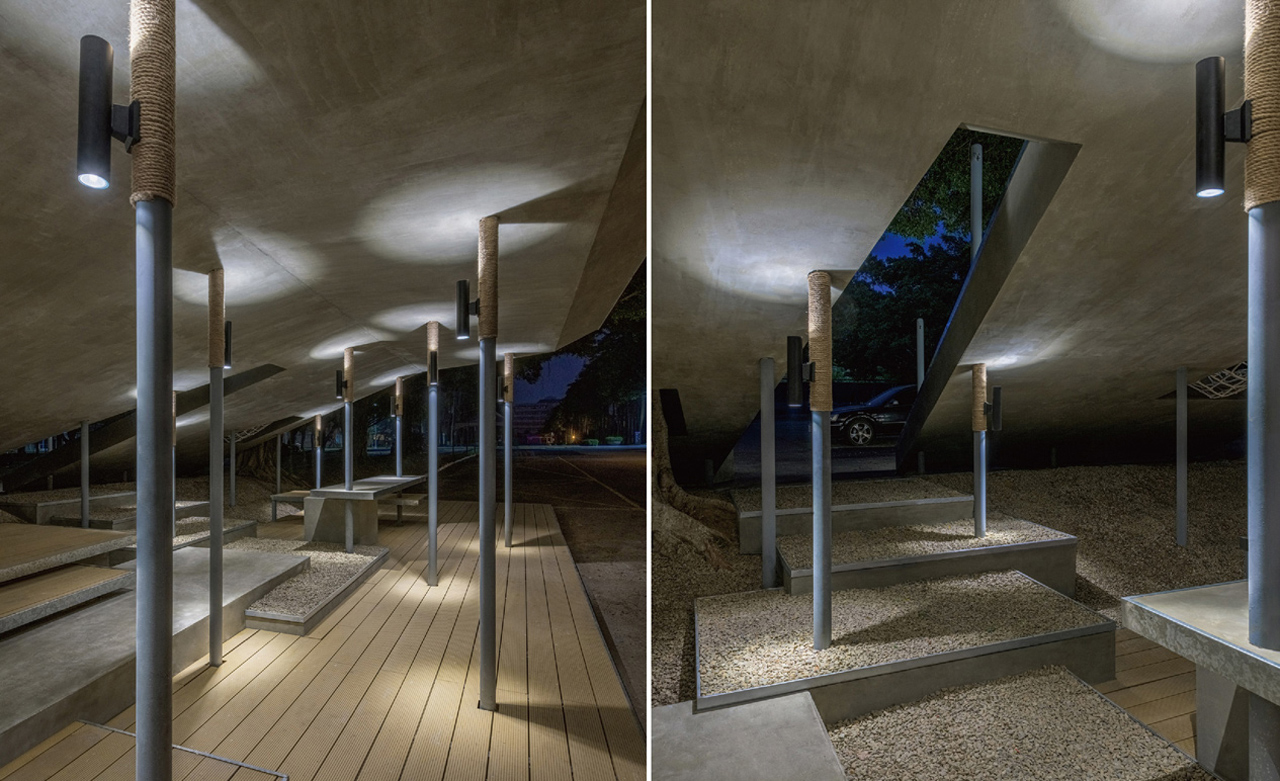
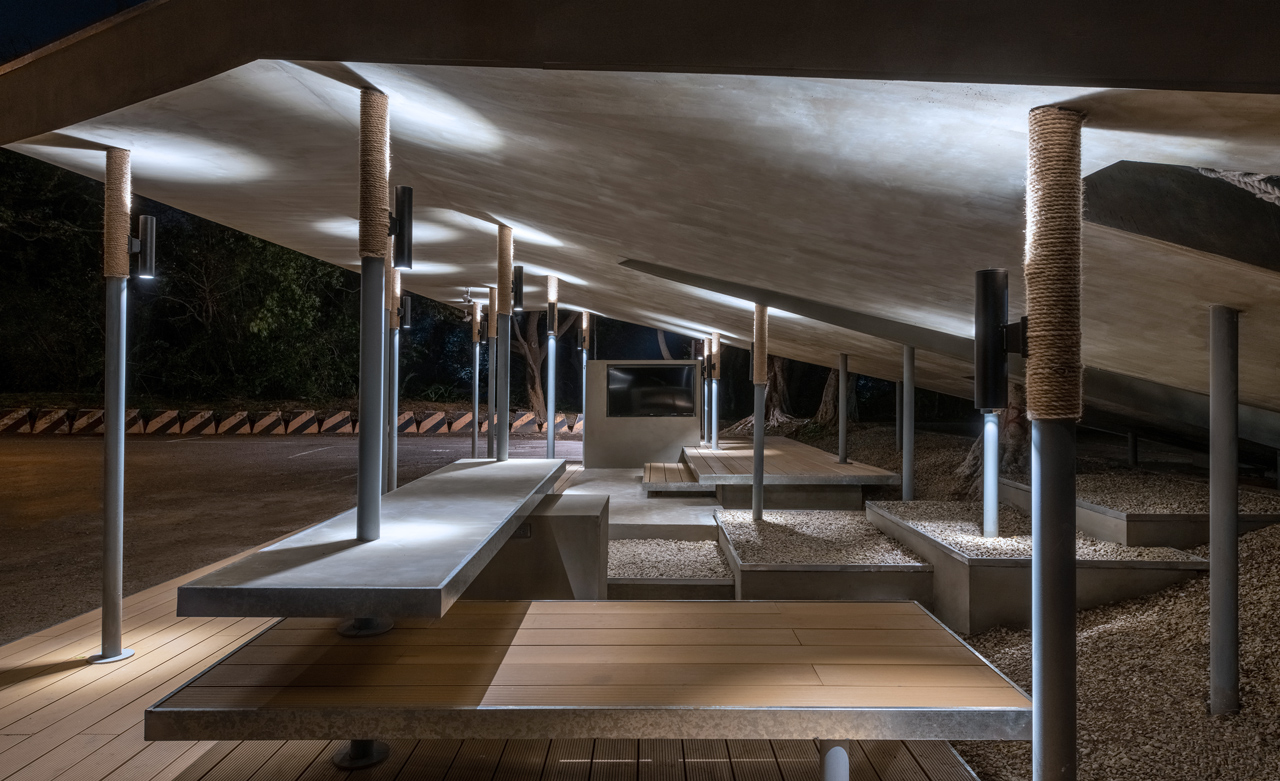
空間構築-厚重與輕透的複合交織
Spatial Construct – Intricate Interweaving of Solidity and Lightness
地景式設計在構造上,單純地以一塊大面屋頂板塊與29根細長的立柱便可完成,厚重的面狀塊體,承載使用者拾級而上與屋頂覆土的重量,為了強化建築的輕盈感,以排序錯位的鋼柱結構,展現一種對比性的輕透與空間張力,並回應周遭榕樹鬚根,形成人造樹林的意象,這樣的手法亦讓整體建築可以全然與周遭環境串聯並隱於其中。候車亭內沒有固定座位,我們以人體尺度設計一連串高低不一的平台板塊,以緩解地形造成的高差,使用者可以或坐、或臥、或蹲,在空間中等待。候車亭屋頂亦作了綠美化處理,人們可以輕易地走頂端,在樹下可以乘涼,或躺在藤床上,可以躺在斜坡上休憩、看球賽、對話、談天,藉由地景設計與仿生構造,成功詮釋了場域與交大創意、開放、包容學風之間的鏈結。
Design by landscape consists simply of a large roof plate with 29 slim posts. A sturdy volume bears the weight of users climbing the stair and the roof-cover earth. The design team accentuates the lightness of the architectural volume by creating contrasting balance and spatial tension. The steel columns, placed alternately, echo the fibrous roots of the fig trees in the notion of a man-made forest, which also allows the entire structure to connect with, and to infuse itself in, the surrounding. As there is no fixed seating in the bus stop, a series of planks of different heights were designed with ergonomic consideration to reconcile with the land-form height variation. The users can stay in the waiting area in the postures of sitting, lying-down, and kneeling. The roofing design features greenery so that people can easily walk on the roof, rest under the trees, lie in rattan hammock, watch sport events, have a conversation”, etc. The design successfully interprets the connection between the space and the creative, open, empathetic spirit of the university culture.
